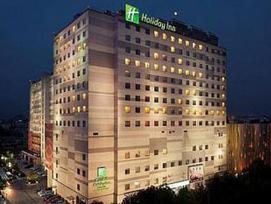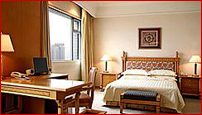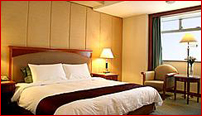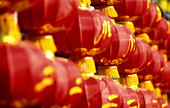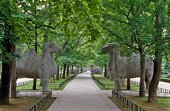|
Nanjing
City
4 days 3 nights Tour Route B
Nanjing Tourist Attractions:
Yangtze River Bridge, Dr. Sun Yat-sen's Mausoleum, Linggu
Temple, Mingxiao Tomb, Ming City Wall,
Nanjing Museum, Xuyuan Garden, Yuejiang Tower, Terrace
City, Swallow Crag, Confucius Temple
Highlights:
* On this 4-day city
tour, you will see all the fantastic sights Nanjing has to
offer, including the tomb of the revered revolutionary Dr. Sun Yat Sen, the Ming City Walls, the Confucius Temple, and a host
of other fantastic and interesting attractions
* During your Nanjing city tour you will be accompanied by your
local English-speaking guide, who will give you an insider's
view into this historic and mighty city
* This tour includes free airport/train station pick-up and
transfer, as well as a farewell dinner during your final night.
If you go on the luxury tour you will have 5 star lodging, and
for the normal tour your hotel will be 3 or 4 stars (all based
on western standards)
B=(Breakfast) L=(lunch) D=(dinner) DEPARTURE: Daily
|
|
|
| |
TOUR ITINERARY |
 |
Tour
code:
GWAC-NJ-02 |
|
Day 1 |
Arrive
in Nanjing
You will fly into the Nanjing airport or take a
train to Nanjing, and upon arrival you will be
met by your local English-speaking guide. You'll
be taken to your hotel, a 3 or 4 star hotel for
common tours, and a 5 star hotel for luxury
tours.
After getting some time to freshen up and
unpack, you'll get in a bit of sightseeing today
by visiting the Yangtze River Bridge. This is
the first bridge to be independently designed
and constructed by the Chinese themselves. The
bridge was added to the Guinness World Records
as the world's longest bridge featuring the dual
functions of a highway and a railway.
|
|
3 or 4 star for common; 5 star for deluxe |
|
Day 2 |
Nanjing (B, L)
Following breakfast in the hotel, you'll get
started on your exploration of the city with
your guide by visiting the Mausoleum of Dr. Sun
Yat Sen (also known as Zhongshan Ling). Dr. Sun
was the first president of the Republic of China
and one of the leading organizers of the
struggle to create a modern republic in China.
The impressive memorial was built in the 1920's.
Its architecture is accentuated by its splendid
natural setting on the forested slopes of Zijin
Mountain on the outskirts of Nanjing, its
buildings made of white stone with dark blue
roof tiles.
Nearby in the Purple Mountains is the Linggu
Temple. The site is a Buddhist temple set in a
park. It is the southeastern part of the Purple
Mountain area, east of the Mingxiaoling
Mausoleum. There are three main buildings in the
complex called the Beamless Hall, the Linggu
Pagoda and a Buddhist temple.The Beamless (Wuliang)
Hall at the site was constructed in 1831, and it
is 22 meters high and 53.8 meters wide. The hall
was made with stone arches and without wooden
beams, so this makes the building distinctive.
There are mannequins that depict Chinese history
in it now.
The Linggu Pagoda is a pagoda that is about 10
stories tall that was built in 1930. There is
also a Buddhist temple building. The site has a
shrine that is said to harbor the skull of a
Chinese monk who went to India to collect
Buddhist scriptures long ago.
Along with Xian and Pingyao, Nanjing is one of
the only cities in China to still contain traces
of its old city wall, and we'll along it next.
After accomplishing the modest feat of founding
the Ming Dynasty more than 600 years ago,
Emperor Zhu Yuanzhang was apparently still
unsatisfied with his achievements and
commissioned a grandiose wall to protect China's
new capital city of Nanjing. The ambitious
defense project called for granite foundations
and intricate layers of boulders and limestone.
A special concoction of lime, tung oil and
glutinous rice secured the layers together.
Because of the meticulous building process, most
of the ancient city wall still stands.
Of the 33.5 km original wall, more than 20 km
still encircles the ancient city bearing true
testament to Chinese engineering. Today, you can
explore the wall's impressive 12m-high gates,
battlements and bulwarks. One of the
best-preserved gates of the wall, Zhonghua Men,
also distinguishes itself as the largest castle
in China.
We'll then a modern feat of engineering at the
Yangtze River Bridge. The Great Bridge over the
Yangtze River in Nanjing is not only a striking
example of post-Revolutionary art and
engineering, but the story behind it is a source
of pride for people throughout China, and
especially those in Nanjing. It is the first
modern bridge completely built by Chinese
people. After the 1949 Revolution, China worked
closely with the Soviet Union, and the Soviets
provided many technical advisors and engineers.
Unfortunately, relations between the two
countries deteriorated in the early 1960's, and
the USSR brought all of its engineers home.
Unwilling to give up, Chinese engineers managed
to overcome the challenge and create this
monumental and impressive bridge. The huge piers
of the bridge are capped with towers topped by
giant glass sculptures representing red flags
surging forward, vividly recording the
enthusiasm and patriotism of 1960's China.
Next we'll head indoors to one of the country's
first museums, the Nanjing Museum. With an area
of 70,000 square meters, it is one of the
largest museums in China. The Nanjing Museum is
located inside the Zhongshan Gate of Nanjing
City. lts predecessor was known as the Central
Museum Preparatory Location. The complex of
buildings represents an amalgamation of east and
west, with the great hall copying the style of a
Liao-dynasty palace. The Museum currently holds
some 400,000 objects in its collections, among
which are some of the most famous objects in
China. These include the only complete set of
'jade suits sewed with silver thread' in China,
which are world renowned. In 1982, a Warring
States period Chu State tomb was excavated from
which stellar pieces were retrieved that also
form some of the extraordinary treasures in this
museum.
We'll cap off your first full day in Nanjing
with a trip to the Confucius Temple and its
surrounding neighborhood. The Confucius Temple
is south of the city's central district. There
was a temple that was built in the year 1034
during the Song Dynasty period on the banks of
the Qinhuai River. During the past millennium,
it was renovated, reconstructed, and enlarged so
that it became a large complex. It was used by
Confucian scholars. Next to it was the Jiangnan
Gongyuan that was the largest examination area
for people taking the imperial examinations and
the Xue Gong that was the Qing Imperial Academy
for training mandarins to govern the vast
empire.
The surrounding neighborhood is also a sight of
itself, as is the place to be on weekends and
holidays. Clothing shops and restaurants
dominate the main streets (closed to vehicular
traffic) while street stalls in the alleyways
sell stuffed animals, plants, CDs and even more
clothes.
|
|
3 or 4 star for common; 5 star for deluxe |
|
Day
3 |
Nanjing (B, L,
D)
After breakfast we'll resume our sightseeing.
Our first stop will be the pleasant classical
gardens of Xuyuan. It was originally a garden in
the Price Han Residence. With an area of about
14,000 square meters, the artificial hills,
rocks, buildings and ponds in the garden are
well designed and arranged. The grass, flowers,
bamboo, trees and fish swimming in the pond
reflect the owner's spiritual pursuit. Now the
garden's are composed of a number of
attractions, such as the marble boat, Xijia
(sunset) Building, the office of the Provincial
Sun Yat Sen, Waterside Pavilion of Beaming with
Delight, Fangsheng Pavilion and Chamber of
Rippling Waves.
We'll learn a bit more about the ancient history
of this city at the Ming Xiaoling Mausoleum. It
is the tomb of Emperor Zhu Yuanzhang of Ming
Dynasty, which is one of the biggest Emperor
Mausoleums existed now. The construction of the
mausoleum began in 1383 and has more than
600-year history.
The mausoleum consists of two parts: front and
behind part, surrounding by 45-kilometer
stonewall. The mausoleum was heavily constructed
and planted. The front part begins from the
place of jumping off the horse at that time to
Sifangcheng (Rectangular city). You can enjoy
the stone animals guarding the tomb, a pair of
decorative columns, couples of ministers and
generals have been standing there for centuries
to accompany their Majesty beneath along the way
and the sacred way. The behind part includes
portal, stele inscribed with 4 Chinese
characters, which was written by Emperor Kangxi
in his third inspection tour, Xiaoling Hall, Bao
City and so on. The Emperor Zhu and his queen
are buried behind Bao City. The red portal of
the mausoleum lies in the north and face to the
south, which is the best direction for Chinese.
The name of the tomb "Mingxiao Ling" was printed
on the head of the gate. Two pavilions behind it
were destroyed, but you can still imagine the
fantastic scale from the relics.
Then it is off to the Yuejiang Tower, which is
located in northeast Nanjing. The Tower looks
out over the broad sweep of the Yangtze River.
The 50 meter high pagoda is built in the style
of the Ming dynasty. The tower's walls and beams
are painted red and dark green, and the
glistening ceramic roof tiles are the shade of
yellow once reserved for imperial buildings.
Beneath the tower, a section of the Imperial
city wall wraps around the base of the forested
hill. The tower's highest balconies offer a
breathtaking view over the broad Yangtze River.
We'll next revisit some of the Ming City Wall at
the Terrace City. The Terrace City was once the
Palace during the South Dynasty. People are
accustomed to calling the walls between Jiefang
Gate and Jiuhuashan Hill this name. Standing on
the top of the city wall, the tourists can see
Zhongshan Hill in the east, Xuanwu Lake in the
north, city mansions in the south and Jiming
Temple in the west. A museum about the history
of Ming Dynasty's City Wall stands here.
Before dinner, we'll make our way to the curious
sight of Swallow Crag. On Zhidu Hill outside of
Guanyin Gate, a grotesque peak by the riverside
thrusts itself towards the sky, which looks like
a flying swallow, hence the name. The Swallow
Crag is strategically located and difficult to
access, and under the crag, the waves are
surging and roaring. It has been an ideal place
for men of letters to express their feeling
since ancient times.
To conclude your time in Nanjing, you will be
given a special farewell dinner at a local
restaurant. The dinner will be made up of
Jiangsu cuisine, the province Nanjing is located
in. Jiangsu cuisine is one the 8 great culinary
styles of China, and is noted for its light and
sweet tastes.
|
|
3 or 4 star for common; 5 star for deluxe |
Day 4 |
Departure
Following breakfast in the
hotel, you'll be driven to the Nanjing airport
or train station, and you'll fly on to your next
destination, ending your stay in Nanjing. If you
would like to extend your stay in China then
please go to our China City
Tours and
China
Package Tours pages to find out about more
of the great destinations in China we offer!
|
|
3 or 4 star for common; 5 star for deluxe |
|
|
|

